
If you’re thinking about buying a blender then you will no doubt have considered Vitamix. The brand is synonymous with powerful blenders, but these machines come with a hefty price tag, so it can be tricky to figure out whether it’s worth investing in a covetable Vitamix.
The Vitamix A2300 is by no means a basic blender, but it is the most entry-level and thereby the cheapest option in the Vitamix Ascent Series. This is the brand's smart range of blenders, equipped with clever SELF-DETECT technology. This range of blenders can be paired with any of the compatible containers including cups, bowls, and even a food processor attachment - all available to purchase separately.
I’ve reviewed several Vitamix blenders and I’ve always found them to be among best blenders you can buy. I was expecting big things from the Vitamix A2300 and safe to say, it didn’t disappoint.
Product specifications
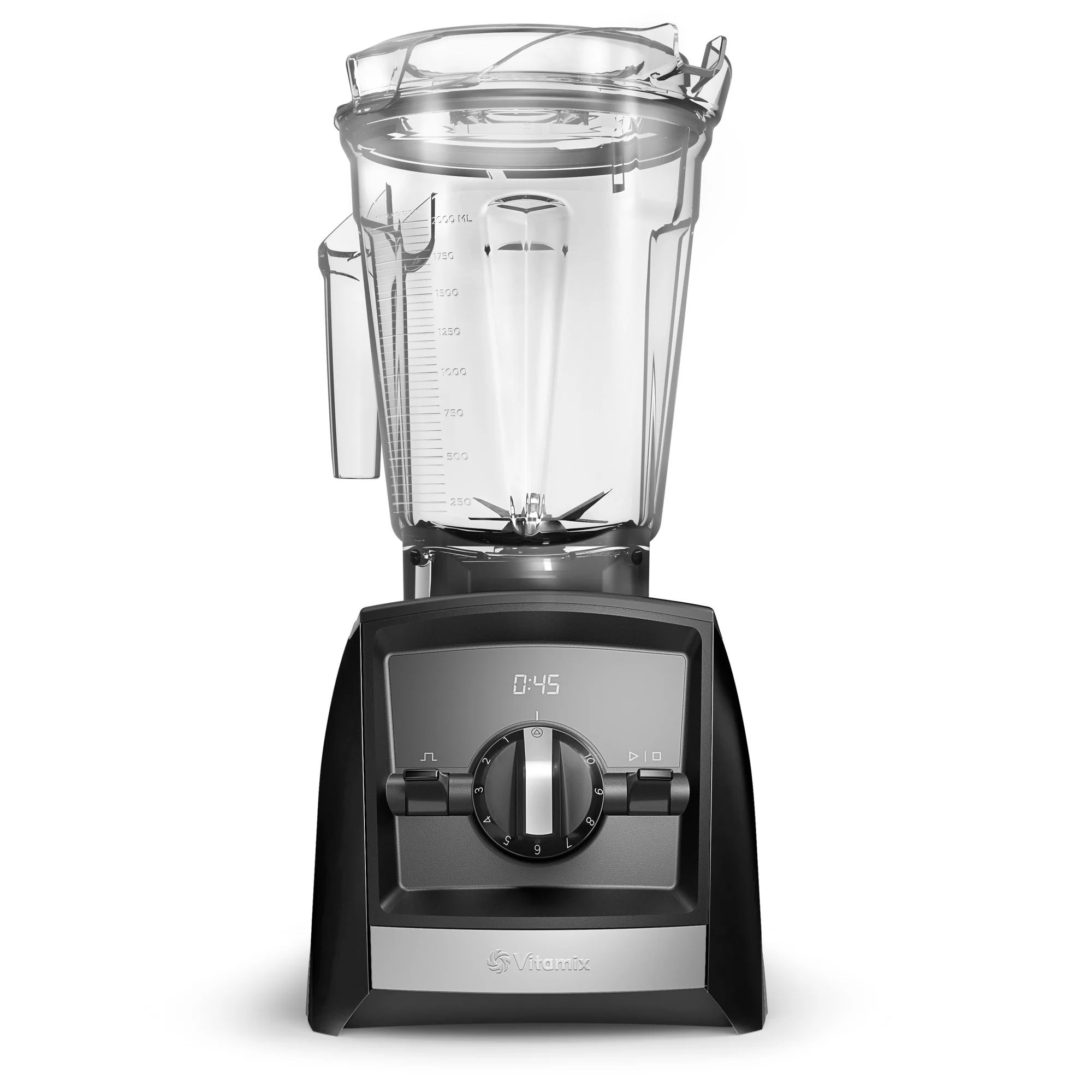
Who will it suit?
As with most Vitamix blenders, this model is suited to those with an ample budget. Furthermore, you’ve got to be pretty serious about blending, both to justify the price, but also to use it to its full potential. It’ll be wasted on people who just want to blend protein powder with milk.
If you’re a budding chef who wants to experiment with nut butters and dips, soups and sauces, this blender will serve you well. Its 10 blending speeds will offer all the control you need. With the option to add on accessories, there’s plenty of scope to build it into a more versatile appliance.
Unboxing and setting up
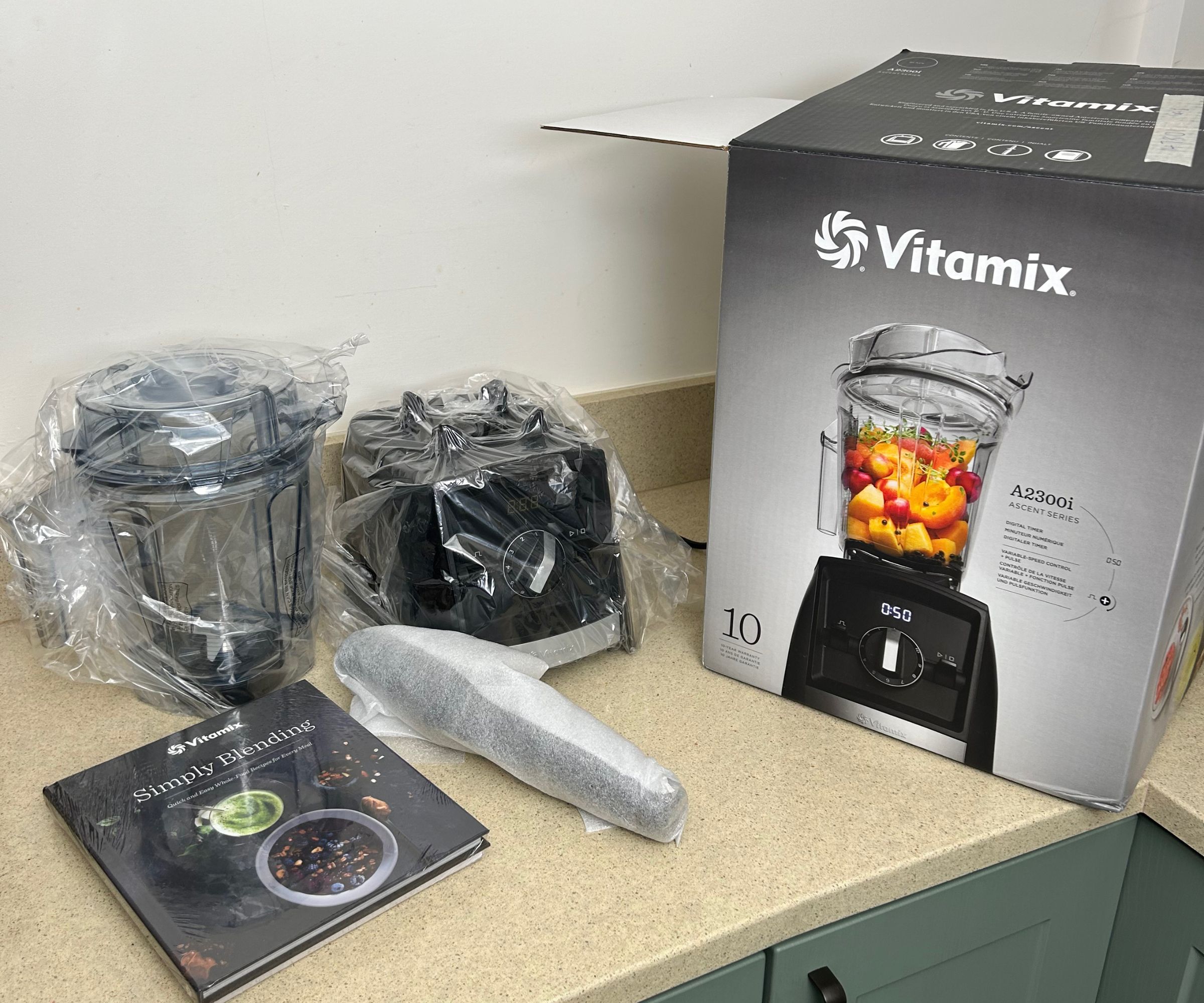
The Vitamix A2300 arrived neatly packed in a compact box, protected by cardboard instead of polystyrene. The box contained the motor base which has a weightiness that implies quality and power. There’s a 64oz plastic container that is lightweight with a generous pouring spout and large handle.
The lid for the container clips into position with two side clips and has a removable lid plug. Unlike the Vitamix E310, this model is equipped with a safety feature that means it won’t switch on unless the lid is clicked into place. Which makes it a great choice if you have little ones in the house.
The final part is a tamper that can be inserted into the lid when the lid plug is removed. This allows you to push ingredients towards the blades during blending. There’s also a recipe book provided in the box and it includes a wide range of useful recipes to get you started.
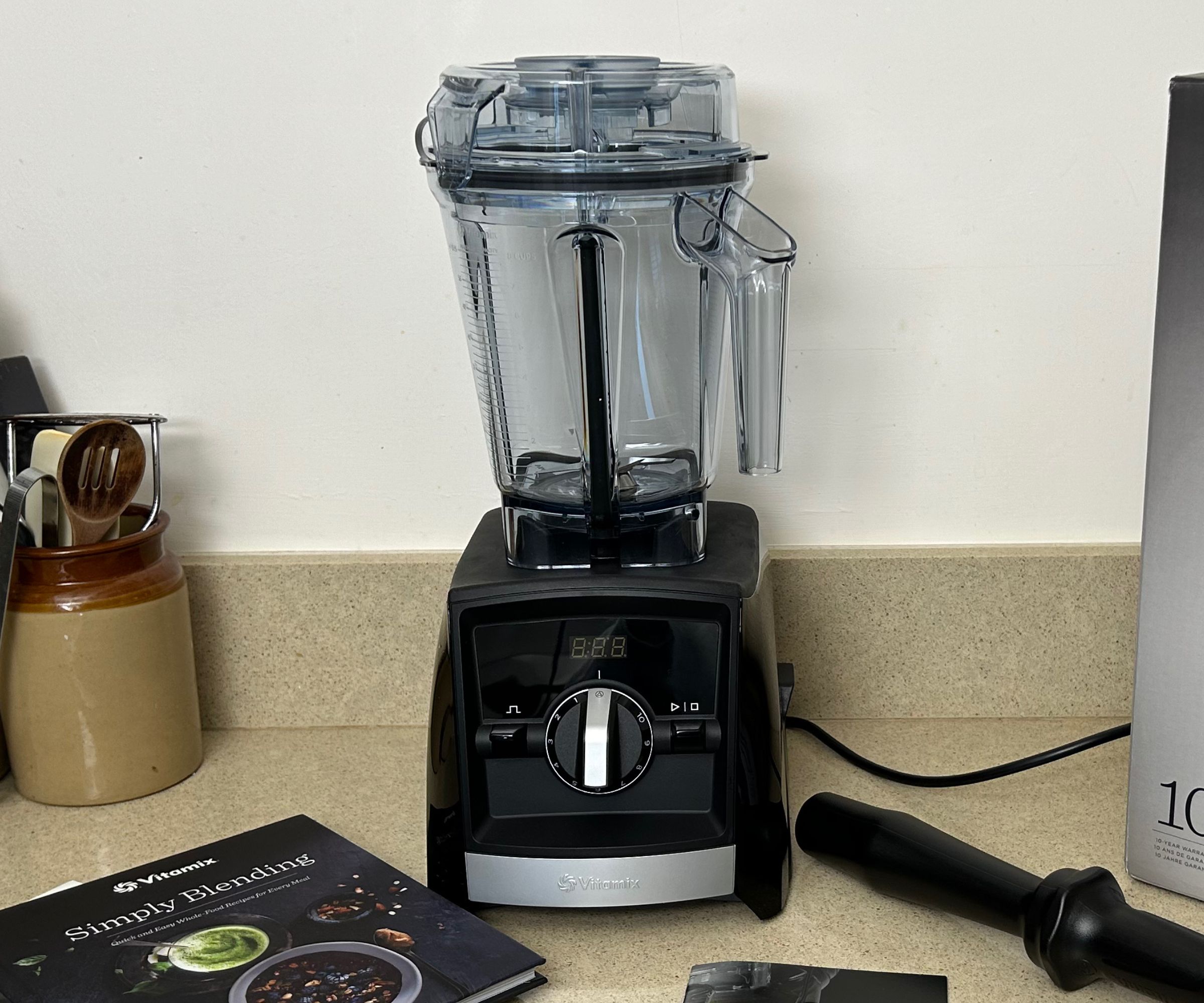
The container sits directly on to the base without you having to master a complicated twisting maneuver or locking system. And it can be used with the handle to either the left or the right, making it ideal for everyone, no matter which is your dominant hand.
The base has a hidden on/off switch on the right hand side. On the front there’s a variable speed dial, numbered 1-10. To the right of the dial is a start/ stop switch and to the left is the pulse switch. It’s an uncomplicated setup that left me with little need to consult the manual.
Above the controls a digital timer counts up while it blends, this is particularly helpful when following recipes in the recipe booklet, as these detail the exact time to blend for. It’s advisable to give the container a quick wash before the first use, but other than that, it comes out of the box pretty much ready to go.
Test 1: Smoothies
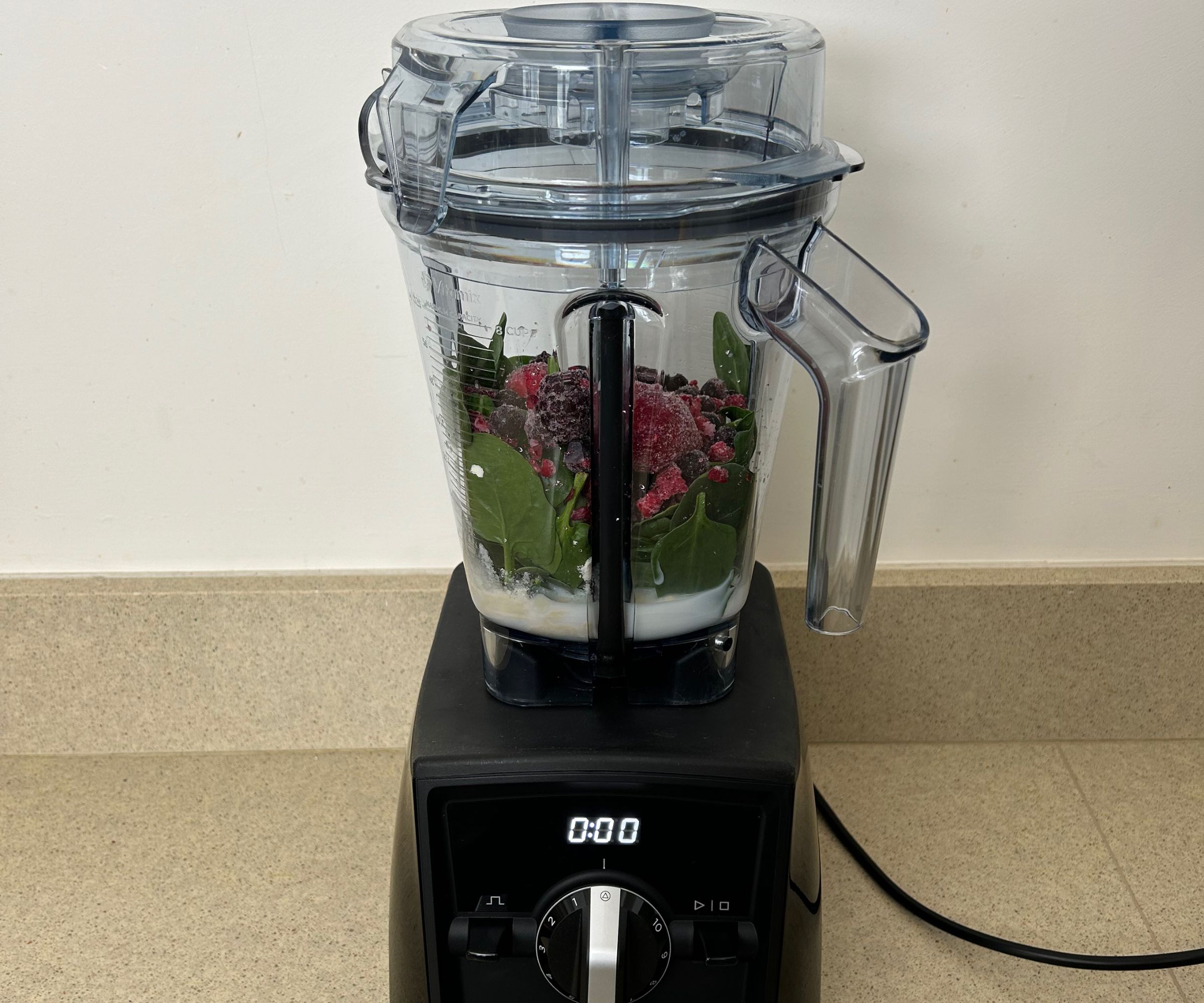
The first thing I did was to make a smoothie. I blended 1 cup milk, 1 oz protein powder and 2 oz fresh spinach with 2 cups of frozen berries. The berries ranged from small frozen blackcurrants to big whole frozen strawberries. I knew it would be a real test for the blender to liquidize these berries quickly and efficiently.
I followed the instructions in the manual regarding the order in which the various smoothie ingredients should be added. Then switched it on at the lowest speed, increasing the speed gradually up to 10. The mixture was quite thick though, so after 20 seconds I put the tamper in to give it a helping hand.
After a further 20 seconds, it was clear I’d been a little over-enthusiastic with the quantity of frozen berries, so I stopped it and added an extra ½ cup of milk. After this I blitzed it up again for a further 1 minute.
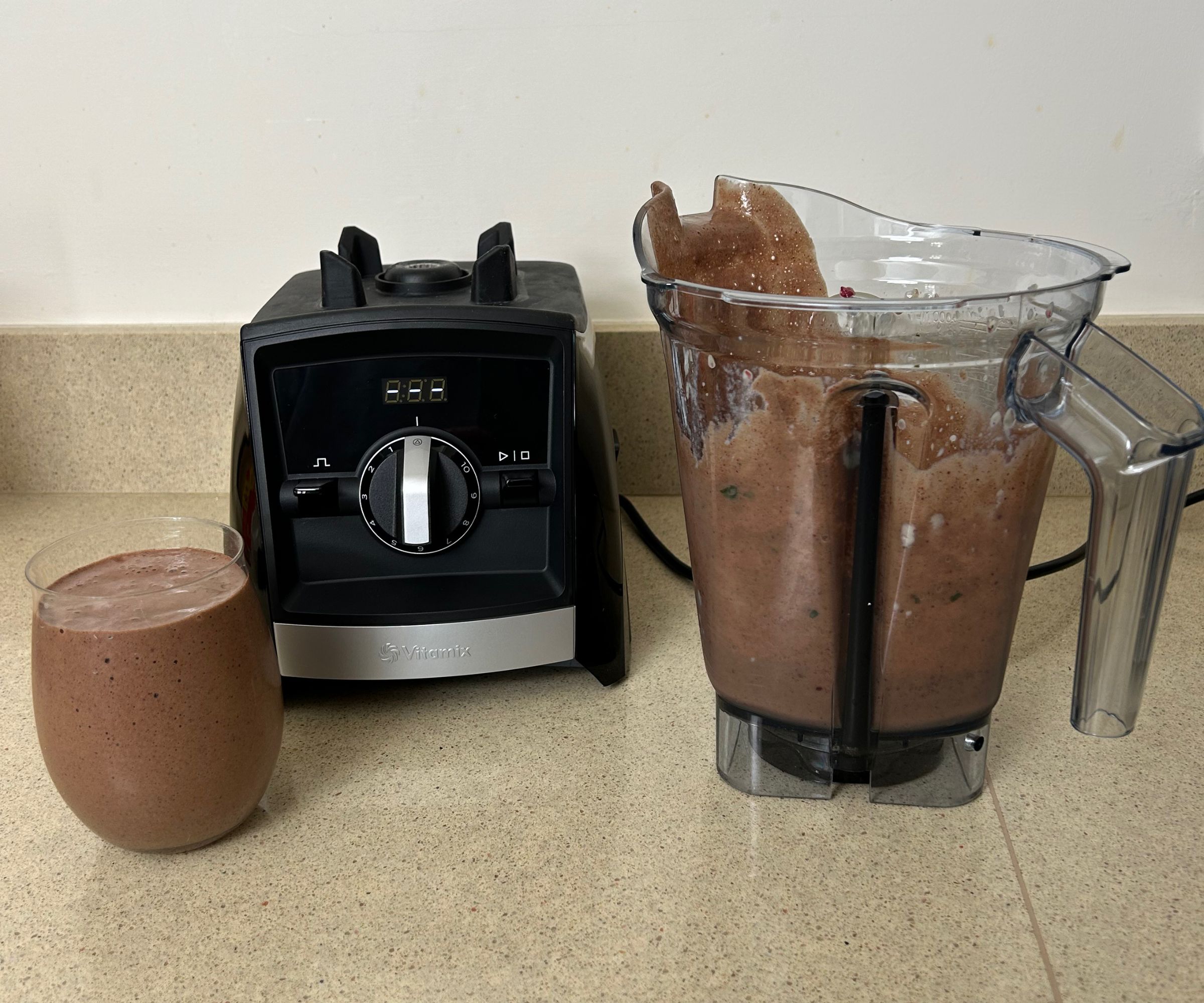
The resulting smoothie was aerated and smooth. There was a hint of grittiness from some berry seeds that hadn’t been completely pulverized, but it was a minimal amount in comparison to the seedy grittiness I’ve experienced when making berry smoothies in cheaper blenders. The spinach leaves were completely blended into the drink, which is the gold standard when I test blenders.
I also made a spiced carrot smoothie with 1 ½ cup milk, 1 oz protein powder, ½ teaspoon each of cinnamon, turmeric and nutmeg, a whole sliced frozen banana sliced, a whole carrot sliced, and ¼ cup golden raisins.
After a mere 45 seconds of blending, the smoothie was thick and creamy, with no trace of grittiness. There wasn’t even a stray unblended raisin, which my years of testing have taught me is rare when blending them into a smoothie. Yhe raw carrot had been completely obliterated, which again, is impressive.
Test 2: Black bean soup
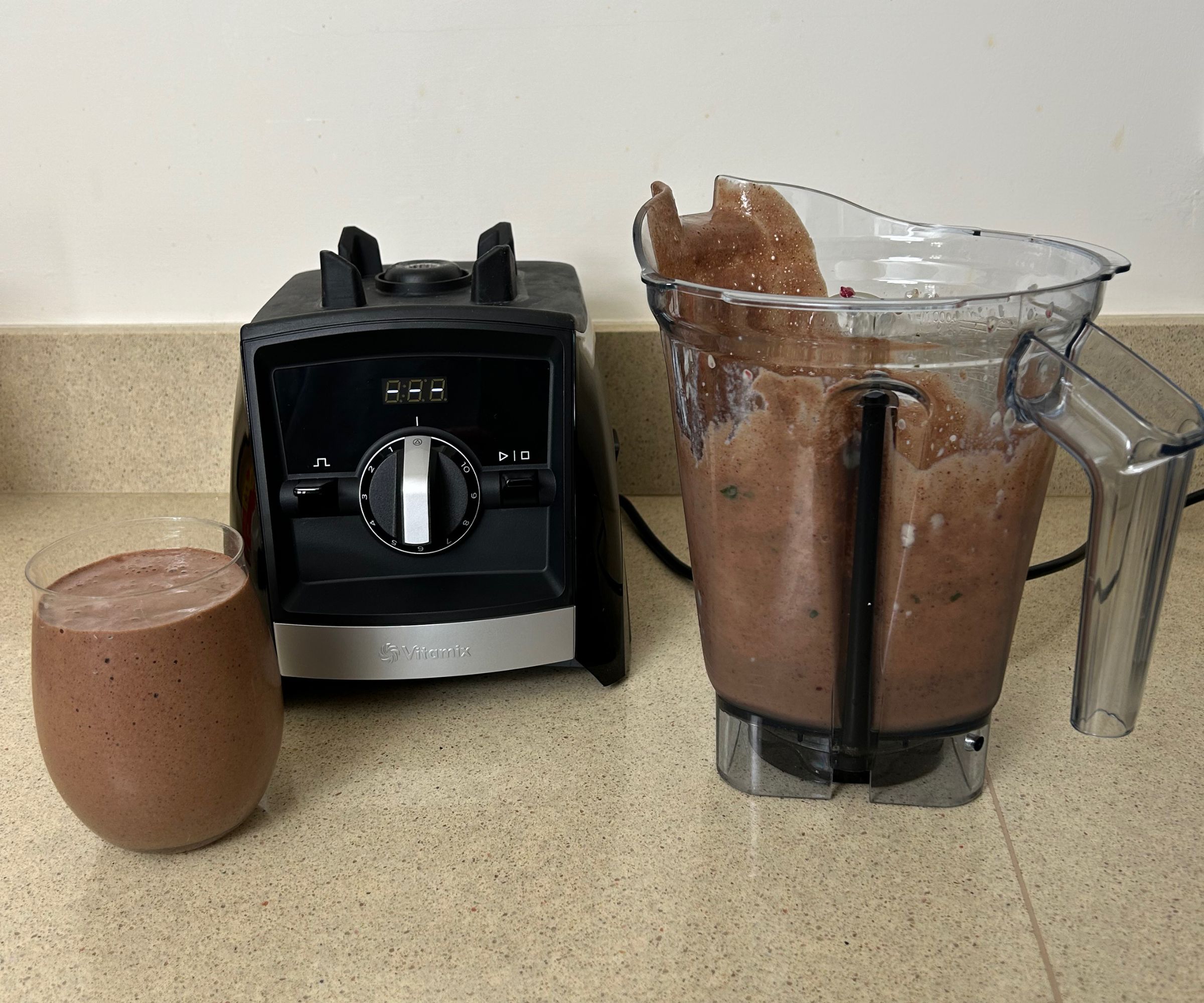
I followed a recipe for black bean soup that’s in the included recipe book. I simply had to fry some onion and garlic to soften it and then add this along with vegetable stock and black beans to the blender. This model doesn’t have a soup program, but the recipe stated to blend at the highest speed for 6 ½ minutes.
It’s a super quick way of making minimal effort homemade hot soup. But, it’s very loud. I measured 99dB on my noise meter, which is the equivalent of standing 25ft from a motorcycle. So it’s not one to do while the baby is sleeping, or you’re taking a work call.
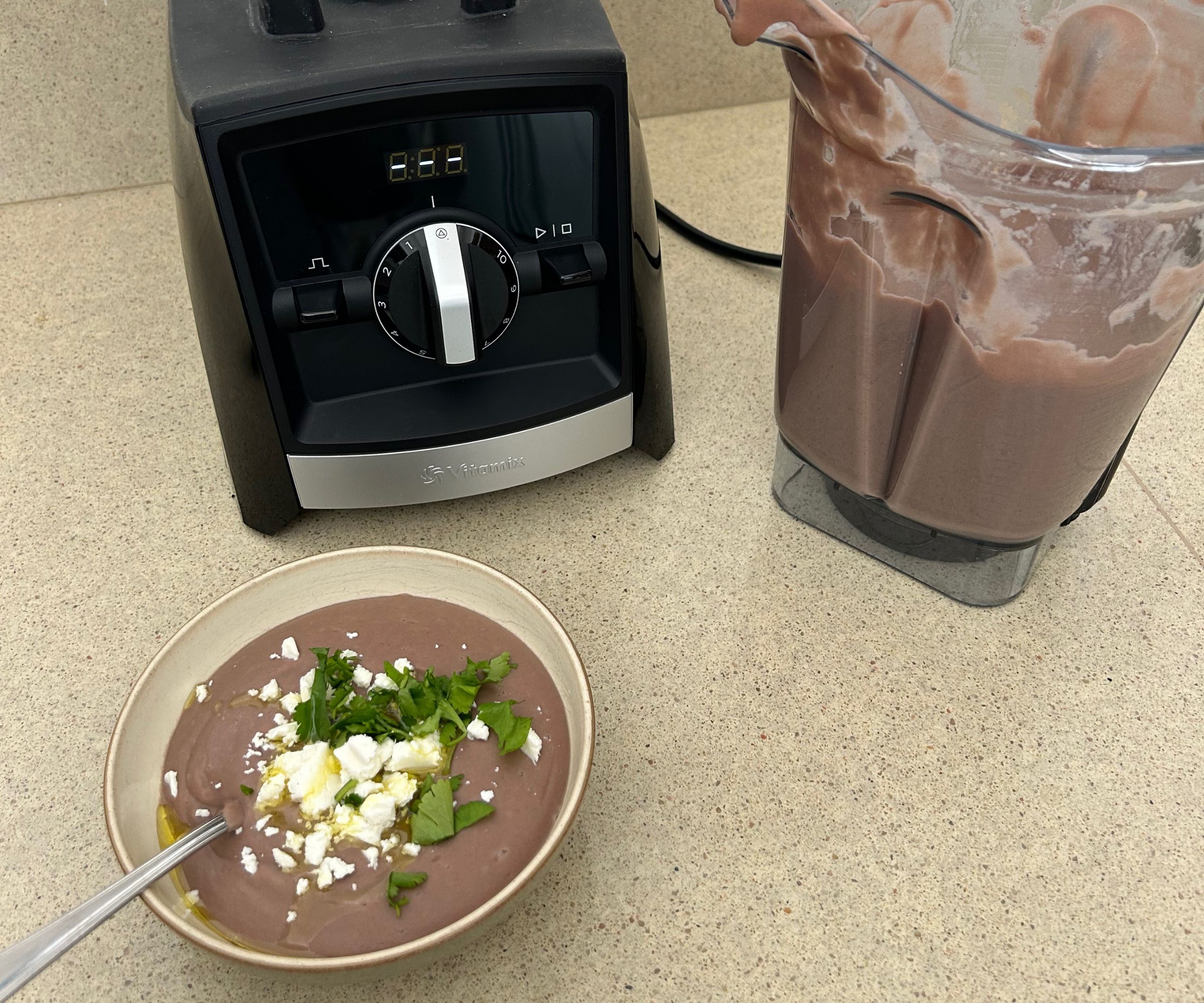
At the end of blending though, the soup was 177F/ 80C, so plenty hot enough to eat immediately. It was incredibly smooth and I topped it with cilantro and feta cheese for a tasty lunch. If you prefer a chunky soup, you’d need to add the chunks in after blending. Keep in mind that some raw foods like onion have to be cooked before you make the soup in the blender. This isn't the case with dedicated soup makers like the Ninja Foodi Hot and Cold, for example.
Test 3: Ice
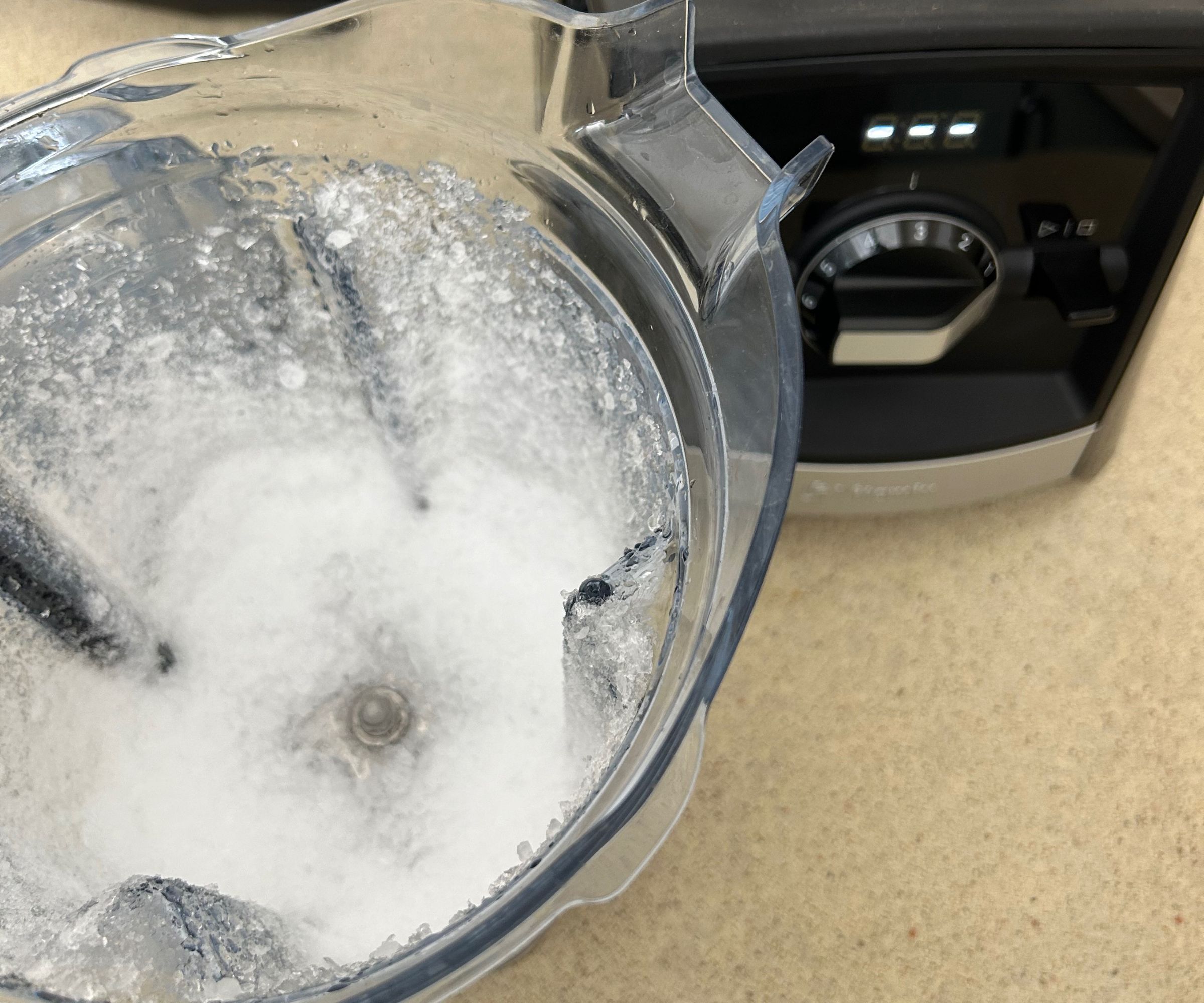
It’s common for some blender brands to put a limit on how much ice you should put in the blender at a time. But having browsed through the manual I couldn’t see anything about ice. So I emptied a whole tray of 14 ice cubes into the blender.
I set the speed to number 4 and pressed the pulse button a total of 18 times - which was probably the equivalent of 18 seconds of continuous blending. And in that short time, all the ice cubes were pulverized into even snowy crushed ice. When I tipped it all out, there were no rogue chunks of ice stuck under the blades. It was a great result and the blender didn’t struggle whatsoever.
Test 4: Butter
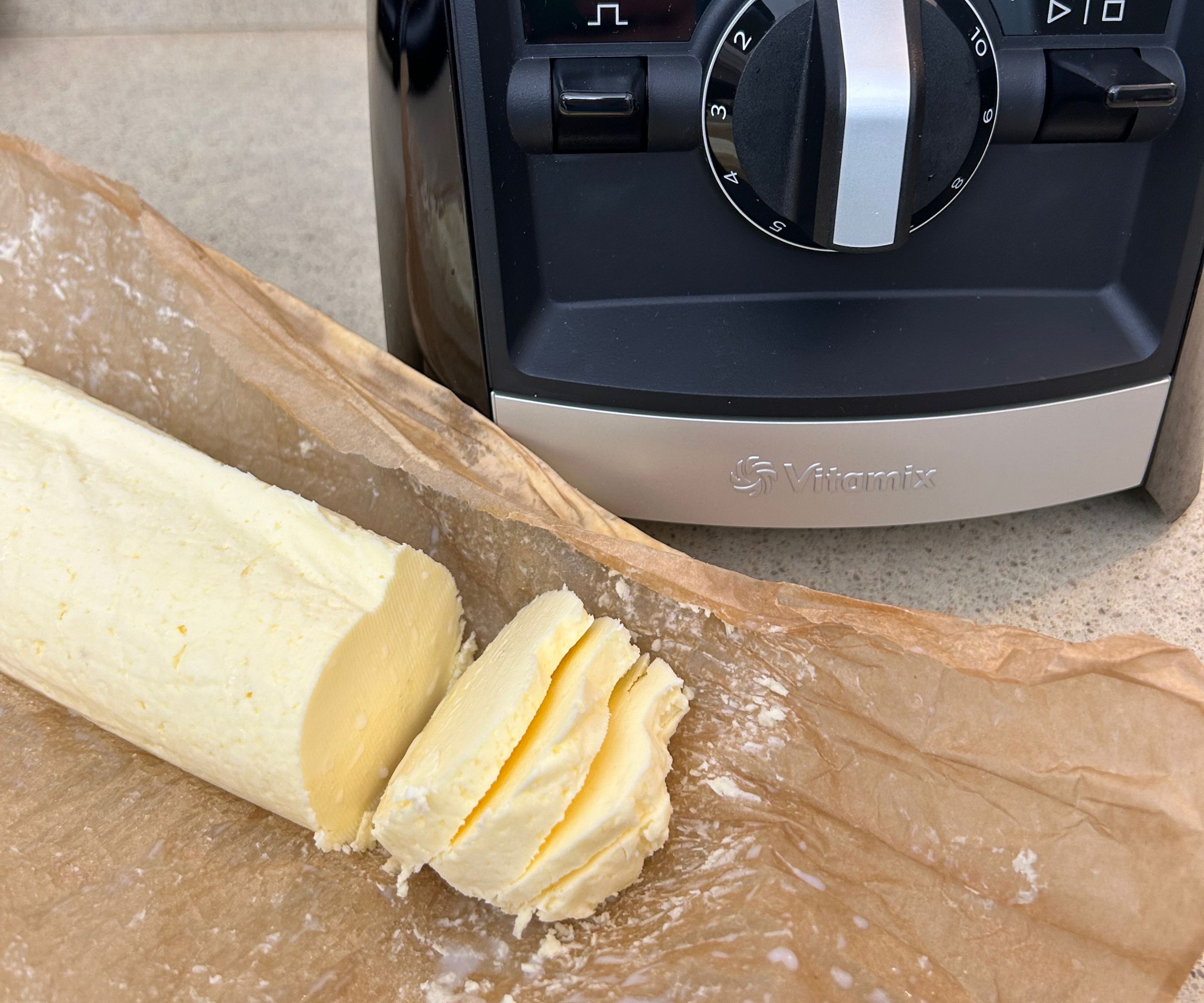
With some spare cartons of cream in the fridge, I decided to follow the instructions in the recipe book to make homemade butter. After pouring the cream into the blender I switched it on and slowly increased the speed to 10, then let it blend at that speed for around 1 minute.
I drained off the buttermilk, mixed in some salt and rolled it in baking paper. After a night in the fridge it was delicious homemade butter ready to spread on my morning toast. It couldn’t have been easier.
Test 5: Hummus
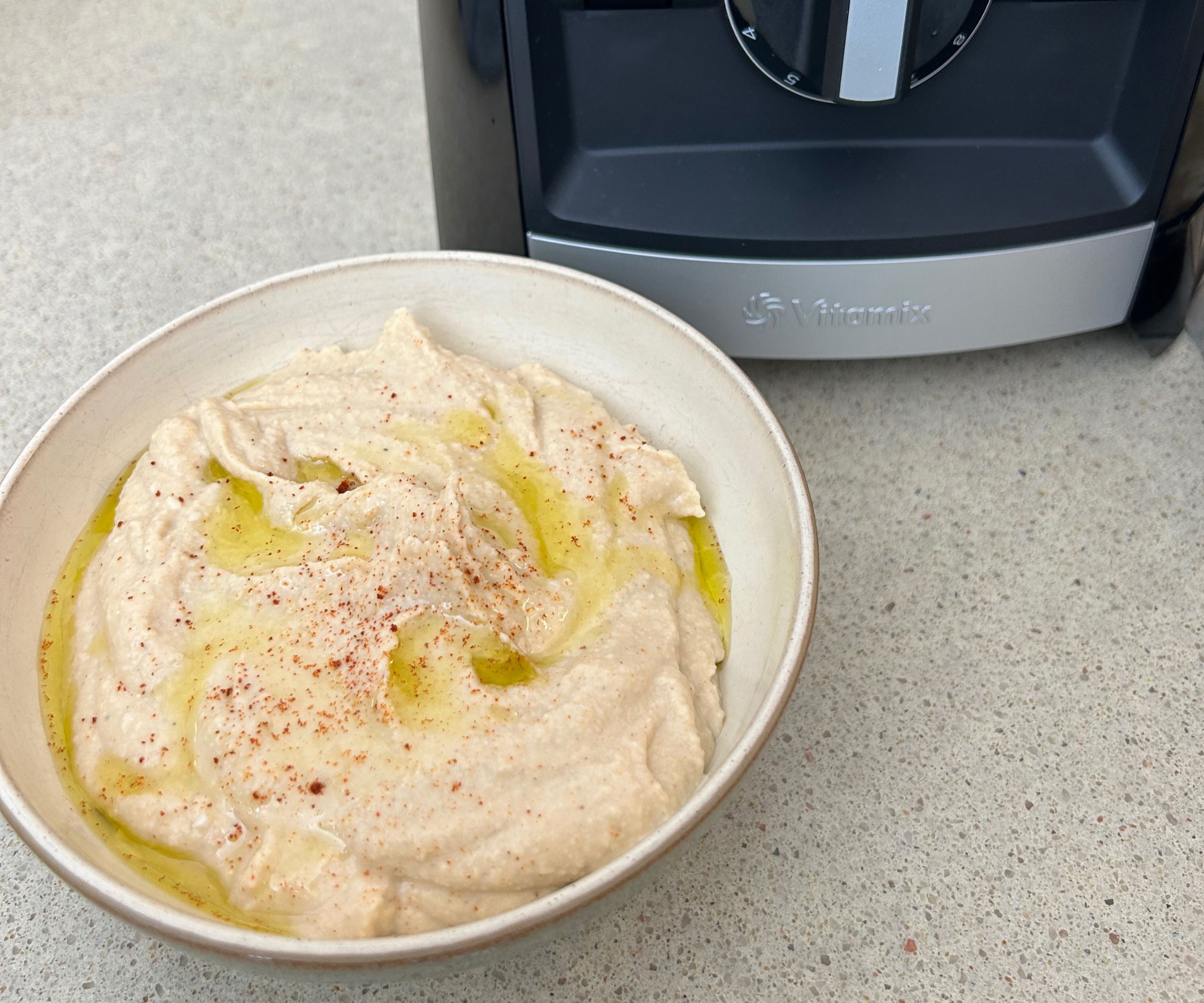
I followed the hummus recipe in the recipe book, but cut it down by half. It was mixed to a smooth dip in a little under one minute. Even most of the tiny whole sesame seeds were completely broken down, which is no mean feat.
Test 6: Peanut butter
Finally, I attempted to make peanut butter. The recipe just calls for peanuts, so it’s way healthier than the store bought variety that can contain lots of other added ingredients like oil and sugar. And after blending for 1 minute on the highest speed followed by 30 seconds on speed 7, it had completely pulverized 18 oz peanuts into a silk-smooth, spreadable nut butter.

It took me a while to scrape all the nut butter from beneath the blades. But the speed and ease with which it turned the nuts into peanut butter, was a joy to watch. Although it’s worth noting that the peanut butter was warm when I decanted it out into a tub. Even in 90 seconds, the blades create heat, which may be undesirable for some recipes.
Cleaning
When it came to cleaning the container, I followed guidance in the manual after most recipes. I half filled the container with warm water, added a drop of dishwashing liquid and with the lid in place, returned it to the base. A quick whizz up at full speed is enough to remove virtually all residues. Then it just needs a quick wipe and a rinse.
Sadly the manual makes no mention of the main container being dishwasher friendly, so I didn’t risk it. But the tamper, lid and lid plug can go in the dishwasher so I put them all in the dishwasher after making peanut butter and they washed well.
How does it compare?
If you’re set on Vitamix but your budget won’t quite stretch to the A2300, take a look at the Vitamix E310 that I also reviewed. At around $350 it’s somewhat more affordable and yet it still offers 10 blending speeds and impressive performance. The main compromise is the smaller 48 oz container and it also lacks the smart self-detect features of the Ascent series.
At the opposite end of the scale is the all-singing, all-dancing Vitamix A3500. Starting at $650, this is the blender for the person who wants top-of-the-range performance and features. Currently sitting at top of the list in our best blenders guide, it’s a beast of an appliance.
Should you buy the Vitamix A2300?
It’s safe to say that if you want a powerful blender that can cope with even the toughest of foods, the Vitamix A2300 is a great choice. If performance is your main consideration, then this is absolutely a worthwhile investment.
If you’ve got this far, then you probably have the budget to buy this blender. So the price tag aside, it’s not completely without flaws. As I already mentioned, the blades do get warm quite quickly, so you’ll need to make sure you start with chilled ingredients if you want them to stay cold. That said, it blends so fast that this is rarely a major issue. All in all, it’s a premium blender for serious cooks and it’ll tackle all your kitchen blending tasks with ease.







